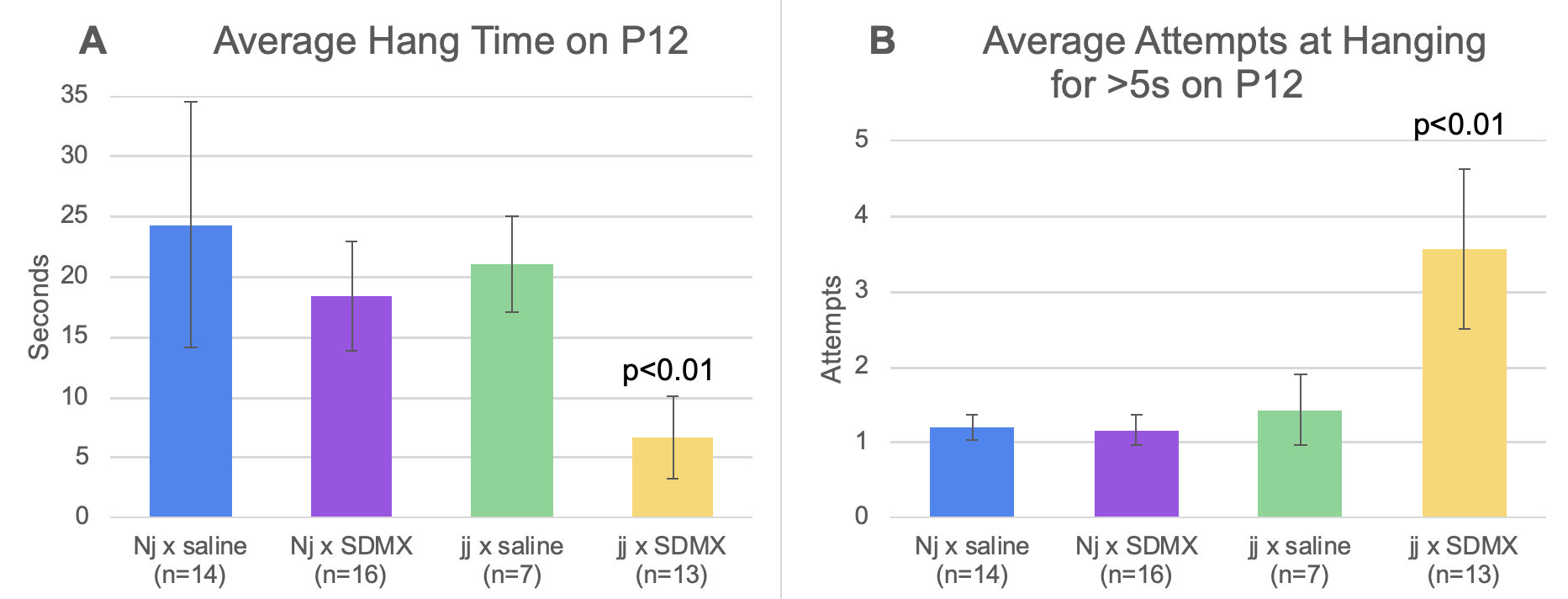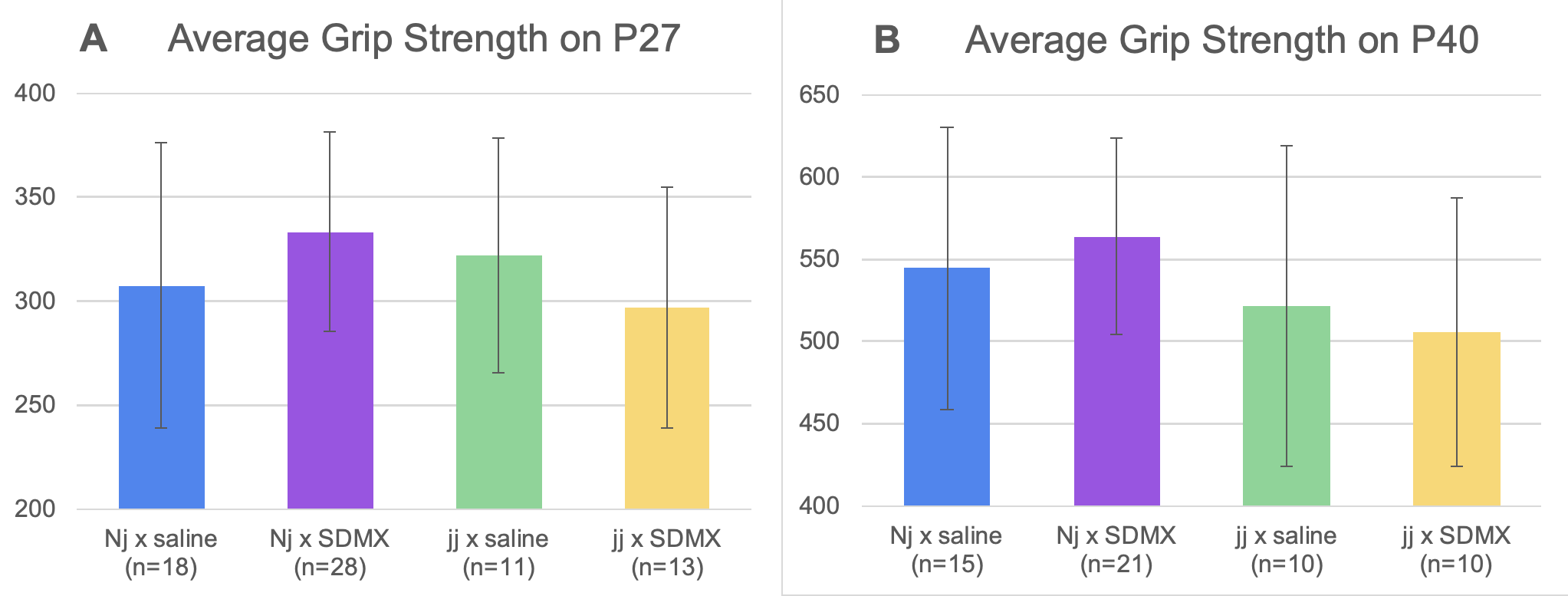Neonatology
Session: Neonatal General 8: ROP, Neurology
312 - Preterm Neonatal Hyperbilirubinemia Impairs Developmental Grip Strength
Monday, May 6, 2024
9:30 AM - 11:30 AM ET
Poster Number: 312
Publication Number: 312.2813
Publication Number: 312.2813
- NR
Nicholas Rickman, Master's of Science
Research Assistant
Case Western Reserve University School of Medicine
Cleveland Heights, Ohio, United States
Presenting Author(s)
Background: Bilirubin is a byproduct of hemoglobin breakdown.. Premature infants cannot excrete bilirubin as effectively as adults, and they often experience hyperbilirubinemia. The homozygous Gunn rat lacks the enzyme which conjugates bilirubin to glucuronide which can then be further metabolized. Serum bilirubin is bound to albumin. A dose of a sulfa drug, sulfadimethoxine, displaces bilirubin from albumin, allowing it to cross the blood-brain barrier. This “free” bilirubin (Bf) is thought to be the major cause of bilirubin’s neurotoxicity. We have previously used the Gunn rat to model neonatal hyperbilirubinemia. Developmental grip strength (DGS) and grip strength (GS) have previously been used as measures of motor coordination, neurodevelopment, and locomotor strength.
Objective: In this study, we used the Gunn rat model to investigate the impact of neonatal hyperbilirubinemia on motor function, using 2 different tests of forelimb grip strength.
Design/Methods: Rat pups received SDMX on postnatal day (P) 5. On P12, DGS was measured by the length of time a pup could hang from a bar (hang time). The hang time was recorded, as well as the failure rate (falling before 5 sec). Each pup underwent 5 trials. On P27 and P40, grip strength was measured using a TSE Grip Strength Meter. The output was measured over 5 trials and averaged for comparison between animals. Serum bilirubin was measured on P5 before treatment, on P6, P7, P8, and on P11. Data was analyzed using a one-way ANOVA with posthoc pairwise analysis.
Results: Homozygous (jj) Gunn rat pups treated with SDMX (jj X SDMX) shorter hang times (p < 0.01), and took more attempts to hang for at least 5 sec on average (p < 0.01), compared to homozygous pups treated with saline (jj X saline) and to heterozygous pups treated with SDMX and saline (Nj x SDMX, Nj x Saline) on P12. There were no significant differences of GS measured on P27 and P40. After treatment with SDMX, serum bilirubin levels in jj x SDMX pups dropped significantly below jj x saline pups by P6. jj x SDMX serum bilirubin levels had returned to jj x saline levels by P11.
Conclusion(s): These data suggest that exposure to hyperbilirubinemia during the neonatal period impairs measures of developmental motor coordination. The first postnatal week of a rat is the developmental equivalent of a 24 – 28 week human preterm infant, and detriments to neurodevelopment during this time have been shown to have lifelong implications. The return of jj x SDMX serum bilirubin levels to jj x saline levels by P11 suggests the deficits on P12 are due to developmental impairments, not the acute effects of hyperbilirubinemia.


